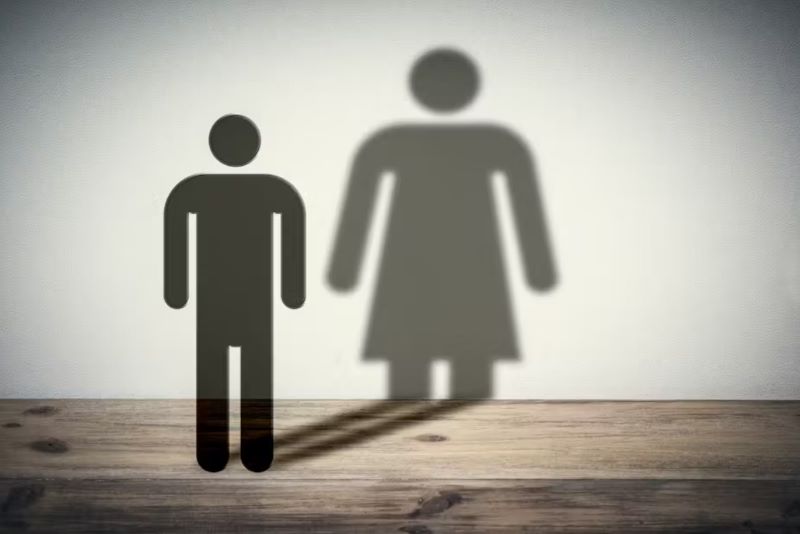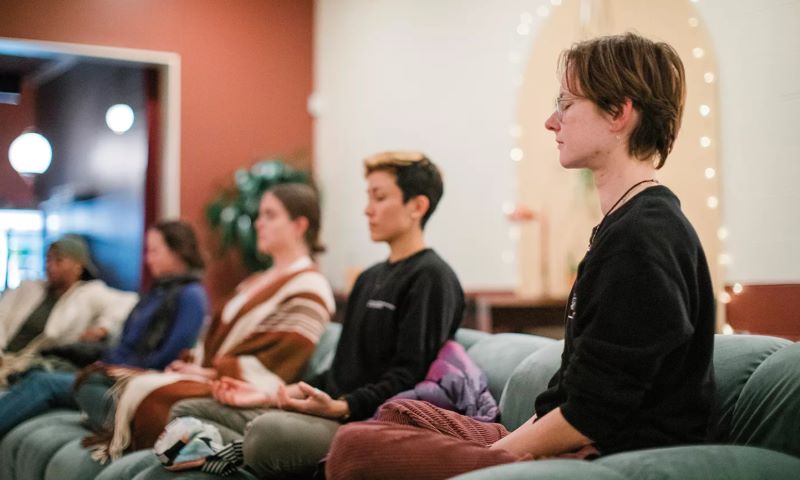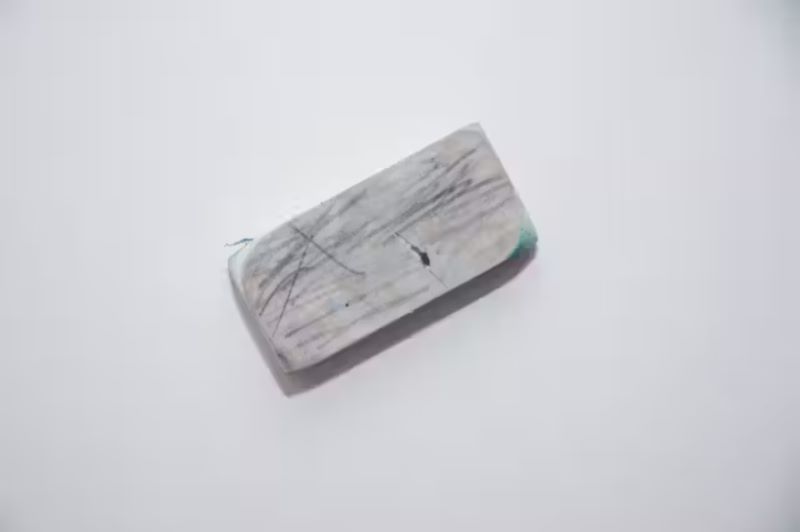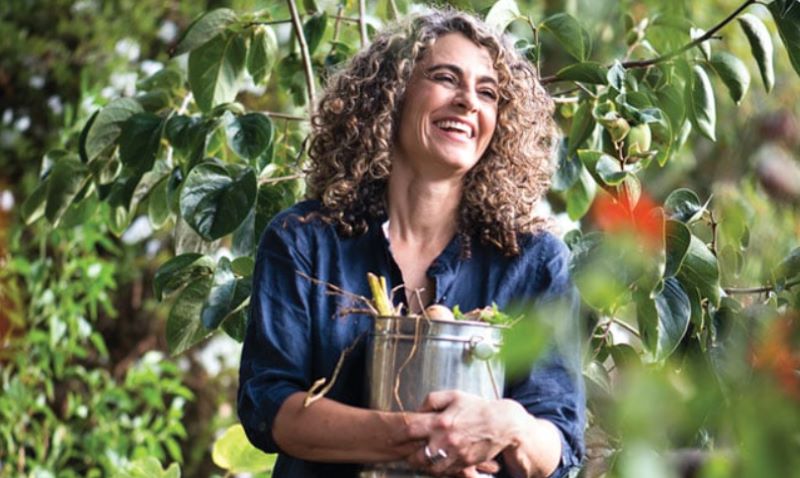
Chris threw himself into his chosen career – teaching. In the absence of a wife and family of his own, the groups of pupils he taught became, in some ways, a little like families. His extreme body shame meant he felt unable to pursue a love relationship, but he was able to fulfil aspects of his authentic self through work.

By Chris North
Author, independent scholar, creative arts facilitator, intersex advocate and activist
Introduction
Looking out at a sea of 42 eleven-year-old faces, I greeted my longed-for dream of being a teacher. I loved the creativity, and my own childhood experiences gave me empathy and a greater understanding. I also discovered Carl Jung and authors similar to him, whose works greatly expanded my inner world.
It was around this time, when I was 21, that my sister had the unenviable task of telling me I was intersex, or ‘hermaphrodite’. She was concerned that our parents had never broached the subject and I was an adult now, with a career. It was a sledgehammer blow. The only hermaphrodites I was really aware of at that point were earthworms.
I needed to concentrate on my work – which I’d striven so hard for and meant the world to me – but this was shocking new information I needed to absorb. Because of the secrecy I’d lived with for so long, there was nobody I could talk to. I didn’t want to upset my sister either, and had to deal with it on my own.
Over the next 23 years I became active in amateur theatre, became a trustee of charitable trusts and taught in six different schools. I formed connections with my classes, which in some ways became the families I couldn’t and never would have.
Medical Misconceptions
At the age of 43 I was appointed deputy headteacher, and then two years later became really ill. Neither GPs nor hospitals had monitored my health since I was 16, and for a long time I’d mistakenly taken 40 mg of oral testosterone daily instead of my prescribed 10 mg. After a long period of scans, X-rays, hormone, blood and metabolic tests, I was eventually admitted to St Bartholomew’s Hospital in London.
Being in hospital again brought back memories for me of my childhood hospitalisations, with their intimate examinations, surgeries, abandonment and helplessness, and in some ways I felt I was that child again.

There was limited understanding of intersex conditions in the 1990s. One doctor said he had seen trans patients but none who were intersex. I endured a litany of appalling misconceptions and hurtful comments from the very people supposed to understand my situation and help me get well.
The first consultant began, “You do know you’re a freak? Have you seen the film ‘The Elephant Man’?” A private endocrinologist asked if I was faking illness to get off work, and my GP advised I tell my headteacher I had a “congenital abnormality”.
That word, ‘abnormality’, triggered medical practitioners to use others, including malformation, deformity, oddity, peculiar, deviation. These words were hurtful, but once again I kept those feelings to myself. “Disorders of sexual development” is an expression occasionally still used today, but now seen as inappropriate.
I was eventually prescribed 250 mg of injected testosterone every three weeks. My reliance on artificial hormones for my wellbeing made me feel even more apart from other men.
I’d had a year’s absence from teaching and now resigned because that length of time away from a school meant I couldn’t adequately return, and the school also needed a fresh start. It was a major bereavement because I’d lost my roles as teacher and a person in loco parentis.

Longing for love
My work had become my world, and moved my attention away from more difficult aspects of my life. Around me I saw what I perceived to be typical families – with mum, dad and children – and my friends taking their relationships for granted, a situation I felt I couldn’t have. What my life could look like was complicated for me.
Before I became very ill, I’d really enjoyed socialising, but was apprehensive about female friends getting too close and wanting more in a relationship. This stemmed from the shame I felt about my body, and so I shielded myself. I wondered if anyone ever talked about why I didn’t have a girlfriend.
Privately, I’d long sought to understand the relationship between sex and love. Aged 17, I’d tried to discuss my longings for love with the child psychiatrist. He told me in various ways that marriage could be on another plane and hinted that there are many facets to a relationship other than sex. But this left me as confused as ever.
Love remained sidelined by the medical professionals that I later spoke with. One doctor suggested I broadened my knowledge by visiting a sex shop, and it felt as if my body was again at the centre. I looked at porn magazines and saw how very different my body was from those depicted on the shelves. I continued to be medicalised by doctors.
In a desperate attempt at self-understanding and with a hope of finding companionship and love, I contacted a charity known as SPOD (Association to Aid the Sexual and Personal Relationships of the Disabled), writing “on behalf of a friend”. They asked about ‘his’ erect penis length, explained what’s needed for clitoral contact and that ‘he’ might gain confidence by them arranging for him to meet with an “appropriately empathetic” woman. ‘His’ emotions, feelings and love were again never mentioned.
My anxiety and embarrassment about how I looked continued into adulthood. In 1992, a hospital psychiatrist suggested I walk along a beach to see how many bodies I saw that I thought ‘normal’, and I realised it depends on what we mean by normal.
He told me to imagine myself in a close loving relationship with a woman. How would it feel? I dug deep; I felt no one could understand the overwhelming power of my extreme body shame and life lived with a long-term secret.

Working Creatively
Although I felt that having a family in the traditional sense was impossible for me, through my work I found a wider family.
With new treatment I began to feel better and thought about what’s next. I qualified as a social worker, at first working on the wards of a general hospital, then in a child health team.
In some ways I’d gone full circle, having been the child in a hospital bed to working alongside children with their own illnesses and disabilities. My past experiences as a child-patient gave me real understanding and I was able to empathise and identify with them.
As a social worker, families shared very personal aspects of their lives with me, and I formed closer professional relationships than in teaching because of that. Unlike the doctors who had treated me, I always tried to see children holistically, as children first and foremost, find ways to include them in everyday living, and make sure they and their parents were listened to in a way neither my parents nor I were.
Structural changes at work started to limit my direct contact with families, so I set up my own children’s and young people’s creative arts company. My new work gave me an independence and freedom to enable those children to have a greater voice. I felt a connection with them because I was reminded of times when I’d been marginalised and excluded as a child.
Many life threads came together, and I knew in my heart I could use my own lived experiences to inform my work with others.
In older age I continued thinking about my life’s purpose, which Jung called ‘individuation’. I was becoming a more authentic me, although undercurrents of secrecy and hiding my true self from the world remained.
Originally published by Wellcome Collection, 06.15.2023, under the terms of Creative Commons Attribution 4.0 International license.







